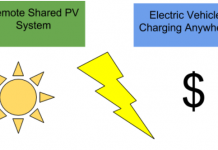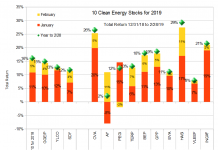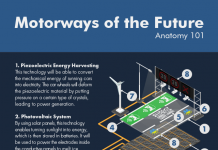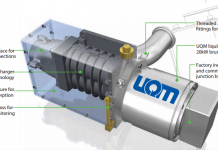Over the past few weeks, John Petersen has written a number of very insightful articles on the energy storage space, with a particular focus on automotive applications. To be sure, this sector has gotten a lot more exciting since Obama’s election, with real dollar commitments coming from the government and even tangible signs that certain technologies are moving into the mainstream. It is fair to say that, on the back of explicit state support, batteries and smart grid have dethroned solar as the new "hot" thing in alt energy/cleantech.
Equally exciting in my view is the focus high-speed rail (HSR) is ostensibly receiving from the Obama administration. To me, mass transit (excluding air travel) is to transportation what efficiency is to electricity. Renewable power offers a way to make electricity production "cleaner", but a kWh saved is the best kWh there is both in terms of economic efficiency (at least initially as efficiency eventually runs into diminishing marginal returns) and environmental benefits. Similarly, while new battery technologies will reduce the air emissions footprint of cars, rail can be, given the right conditions (i.e. high population densities, a congested road system, high fuel costs [whether gasoline, natural gas or electricity], the right distance) a superior economic and environmental alternative per pound of human body transported.
My interest in rail transport (especially of the fast kind) also partly stems from the year I spent living in London and during which I travelled to Paris on a number of occasions (the two cities are 414 km apart, or around 260 miles). The Eurostar was a pleasure to ride; it was comfortable, you left from downtown London and arrived downtown Paris, and it was just an overall much simpler alternative to the plane.
In early March, shortly after details of the American Recovery and Reinvestment Act (ARRA) were made public, I wrote an article looking into two HSR stocks: Bombardier (BDRAF.PK) and Alstom (AOMFF.PK). These were, in my view, the two train makers most likely to experience share price appreciation as a result of potential ARRA HSR money because of their heavy focus in this realm. This is still my view.
Since then, the Obama administration has released a much more detailed plan for its HSR strategy, along with more numbers. Over the weekend, I read through that plan and, after crunching a few numbers, was left wondering: is this enough money to achieve anything close to Obama’s HSR vision?
Vision For High-Speed Rail In America
On April 16, the Obama Administration released its plan for HSR, entitled "Vision For High-Speed Rail In America" (see President Obama’s announcement in the video below).
A Vision for High Speed Rail from White House on Vimeo
There is more to the ARRA’s transportation component than only HSR, and you can find a good summary on Transportation For America’s website. The plan released on April 16 focuses solely on HSR and outlines a rather bold vision backed by not as bold an amount of money. There are three pillars to the plan:
- Projects: grants for shovel-ready projects where engineering work has already been completed
- Corridor programs: use ARRA money to develop phases or geographic sections of HSR corridors (see map below) that have completed plans and environmental documentation
- Planning: use non-ARRA appropriations in budgets between FY 2010 and FY 2015 to work toward fully developing and an HSR network
The HSR corridors identified in the plan as holding development potential are shown on the map below (click on the map for a larger PDF). Further details on these corridors can also be found on the Department of Transportation’s website.
The plan uses the following definitions for the various categories of HSR (underlines added):

Rationale for HSR
In a recent report on HSR, the Government Accountability Office (GAO) noted the following as arguments in favor of HSR.
On congestion at airports and on highways:
"The Department of Transportation (DOT) estimates that several intercity highways linking major urban markets will experience significant congestion by 2035. According to a recent report, capacity limitations will constrain air traffic at 14 airports in 8 metropolitan areas, even if planned capacity improvements are carried out through 2025. In addition, the dependence of growing highway and air travel on fossil fuels raises significant environmental concerns regarding greenhouse gas emissions."
On the demand side:
"The National Railroad Passenger Rail Corporation (Amtrak), the nation’s intercity passenger rail provider, has seen nearly a 20 percent increase in riders in the last 2 years, in part because service enhancements in some intercity corridors have improved overall travel time and reliability, making the train more competitive with highway and air travel. Still, Amtrak does not offer service in many heavily traveled intercity corridors. Moreover, Amtrak’s service continues to have slow average speeds relative to other transport modes, and experiences significant delays, often resulting from sharing track with commuter and freight rail." (emphasis added)
"In the United States or elsewhere, high speed rail tends to attract riders in corridors with high population and density, especially where congestion on existing transportation modes prevails." (emphasis added)
On optimal ranges:
"According to foreign and domestic officials with whom we spoke, generally lines significantly shorter than 100 miles do not compete well with the travel time and convenience of automobile travel, and lines longer than 500 miles are unable to overcome the speed advantage of air travel. Between 100 and 500 miles, high speed rail can often overcome air travel’s speed advantage because of reductions in access and waiting times.
Air travel requires time to get to the airport, which can often be located a significant distance from a city center, as well as time related to checking baggage, getting through security, waiting at the terminal, queuing for takeoff, and waiting for baggage upon arrival at a destination. By contrast, high speed rail service is usually designed to go from city center to city center, which generally allows for reduced access times for most travelers."
HSR Funding – Where The Steel Meets The Track
As stated above, the sums going into HSR are overall unimpressive. They are broken down as follows:
- $8 billion of ARRA money mostly for pillars #1 and #2 above with the added advantage that, unlike other ARRA-funded initiatives, funding for intercity passenger rail development will remain available for obligation until Sept. 30, 2012
- $1 billion per year for five years in budget appropriations starting with the FY 2010 budget to fund pillar #3 above
This equates to $13 billion over a roughly five-year period. The plan does not, however, claim that this $13 billion is the only money that will be made available for HSR projects. Historically, rail has lagged other modes of ground transport with respect to the federal government matching state capital funding (see graph below). States will therefore be expected to be significant financial partners in the projects as will the private sector. Still, even with significant participation from other stakeholders, the question remains: in today’s HSR world, is $13 billion enough?

The best way to gauge the potential size of the federal contribution is to examine it in light of what other recent HSR projects have cost or are projected to cost. The following two tables are taken from the GAO report discussed above. The first one lists out six international projects in Europe and Japan and the second four US projects.


Based on these tables, the international average cost per route mile (excluding trainsets) is in the neighborhood of $66 million with a standard deviation of $41.23 million. The US average is $66.75 million with a standard deviation of $46.96 million. The averages are thus relatively similar. The international median cost is $47.5 million per route mile while the US is $56.5 million. Assuming the US median cost applies to all projects, I created the table below.

Besides using the US median cost, I also assumed that trainsets would be priced at the low end of the range discussed below the table of international projects ($32 million per set). I have no real basis for assuming how many trainsets will be required, and that doesn’t matter – their cost per unit range as reported by the GAO is below the median US cost of building one mile of track. For instance, Siemens just won a Chinese HSR contract to provide 100 trains at a cost of $10 million a piece, with each train capable of transporting 1,000 passenger. Trainsets do not make or brake a project.
This table demonstrates that, in order to get serious HSR mileage out of the current pool of money, construction costs will either have to drop significantly – which is unlikely given that Americans have not been building HSR along with the rest of the industrialized world over the past 20 years and thus have little expertise in the area (the Obama plan discusses this capacity gap on a number of occasions) – or the government’s commitment will have to be materially boosted.
The GAO notes that costs can drop to the $4.1 million to $11.4 million per route mile range if projects are incremental rather than new, but that also limits possible speeds to between 80 mph and 110 mph, which in most of the world doesn’t qualify as fast. Presumably, a fair chunk of this money will go toward such projects so the the bang-for-the-buck analysis will look a bit better. But what this analysis demonstrates is that current funding levels are no where near high enough to build true HSR (HSR – Express and HSR – Regional in the definitions box above) across even half of the corridors identified on the map.
Conclusion
Unlike battery technologies or the smart grid, a few billion dollars in funding does not provide significant boosts in large, mature industries like rail, so unless the government is willing to up the antes, I wouldn’t bet on the US becoming the next major HSR market. China, for instance, is spending $24 billion on one HSR line alone (the article linked to here is worth reading if HSR interests you) connecting Beijing to Guangzhou (1,157 miles or roughly $21 million per route mile – it’s always nice to have a labor cost advantage).
The Obama plan acknowledges that it will be challenging for certain states to provide significant matching funds as many of them are in budgetary binds. The GAO study also finds an overall low degree of interest on the private sector’s part for HSR given the risks involved; some of the HSR projects the GAO studied in international locales aren’t even forecasted to meet operating costs from ticket sales, let alone earn a return on capital invested.
The good news, however, is that there are plenty of places where governments accept this fact of HSR because of the other benefits it provides (i.e. lower emissions, less clogged highways) and where growth will continue to be significant in the next few years. I continue to view Bombardier (BDRAF.PK) and Alstom (AOMFF.PK) as the two firms for which a boom in HSR will have the most notable impact on the bottom line. I also still think that Bombardier’s stock has the greatest capital appreciation potential although it’s been mainly flat since I wrote the initial article on concerns over its aviation unit. While some contracts may flow to both companies from the current Obama plan – and we should find this out by later this year or early next – people with an interest in HSR should have their sight set on China, as that is where the action really is right now.
DISCLOSURE: Charles Morand does not have a position in any of the stocks discussed in this article.










It would be ince if rail corridor planning and transmission planning could be done in conjunction, with both obtaining planning permission together to use the same corridors. A hat trick might be to electrfy the trains at the same time.
Thanks for the analysis, Charles.
Thanks Tom. I suspect the reason why the administration decided to go virtually all smart-grid with its grid spending is for similar reasons. I’m not sure how much a mile of transmission infrastructure costs in American today (factoring in NIMBY) but I suspect that $4.5 billion would not get you very far.
The reality of infrastructure is that it has become incredibly expensive. Investments short of 10s of billions can hardly achieve anything meaningful, especially here where distances are so vast.
Yet a growing move toward electrifying our energy system and reducing our dependence on the car will require those kinds of old-world infrastructure investments.
So what is the difference between BDRAF and BDRBF. Both claim to be Bombardier, are they different sectors of the same company. Is owning one like owning the other, or are they two different investment packages?
Tom, I’m a huge fan of HSR, but can only speak from the perspective of a regular user. As you know, I live in Switzerland, a country with one of the best rail systems in the world. We also pay an average of about $5 a gallon for gas. I’ve gotten to the point where the first thing I do is check the rail schedules if I’m going more than about 30 miles. It’s just easier, faster and cheaper than driving. I also don’t bother with airlines unless the rail trip is more than about 6 hours because by the time I factor in airport delays, security and baggage hassles and travel to and from airports, it’s cheaper and more comfortable to take the train.
I’ve heard lots of folks suggest that European style taxation of gasoline would make sense in the U.S. I can fully support the taxes I pay as an incentive to use existing alternatives. It would be much harder to support the taxation in the U.S. where clean and efficient alternatives don’t exist for most people.
This is a super article my friend.
Brooks:
Both are Bombardier shares but the company has an unusual capital structure. Class A shares have 10 votes per share while Class B shares have only 1 (http://www.bombardier.com/en/corporate/investor-relations/share-information/share-capital-issued?docID=0901260d8000921d).
What this does in effect is to allow the family of the company’s founder to retain a majority of votes in the company (they own almost 79% of Class A shares). Governance-wise, this is sketchy as it does not give shareholders – especially minority shareholders – the power to oust the board or force change if things start to go sour. On the other hand, it does bring a certain degree of stability to the company and allows them to be able to plan for the long haul rather to have to submit to the tyranny of the market’s quarter-to-quarter expectations.
You want to own B shares.
Good point John. Plus it is unclear how palatable a universal increase in fuel taxes to pay for about 10 regional HSR corridors would be to US taxpayers. There would be a definite inter-regional equity issue here.
I believe HSR management would be best handled by state and municipal stakeholders with strong support from the federal government rather than the opposite. Since the benefits of HSR tend to be geographically-concentrated, local actors are best-positioned to find funding arrangements and fiscal incentives that work.
BTW, this will most likely be the case with that plan. The point of my analysis was to show that a significant amount of money will be needed to achieve the vision Obama presents in the video. It is, however, possible that other actors will show up with matching funds well in excess of 100% of what the federal government is providing, in which case maybe there will be some true HSR between major US population centers on the eastern seaboard, in the midwest and in the west.